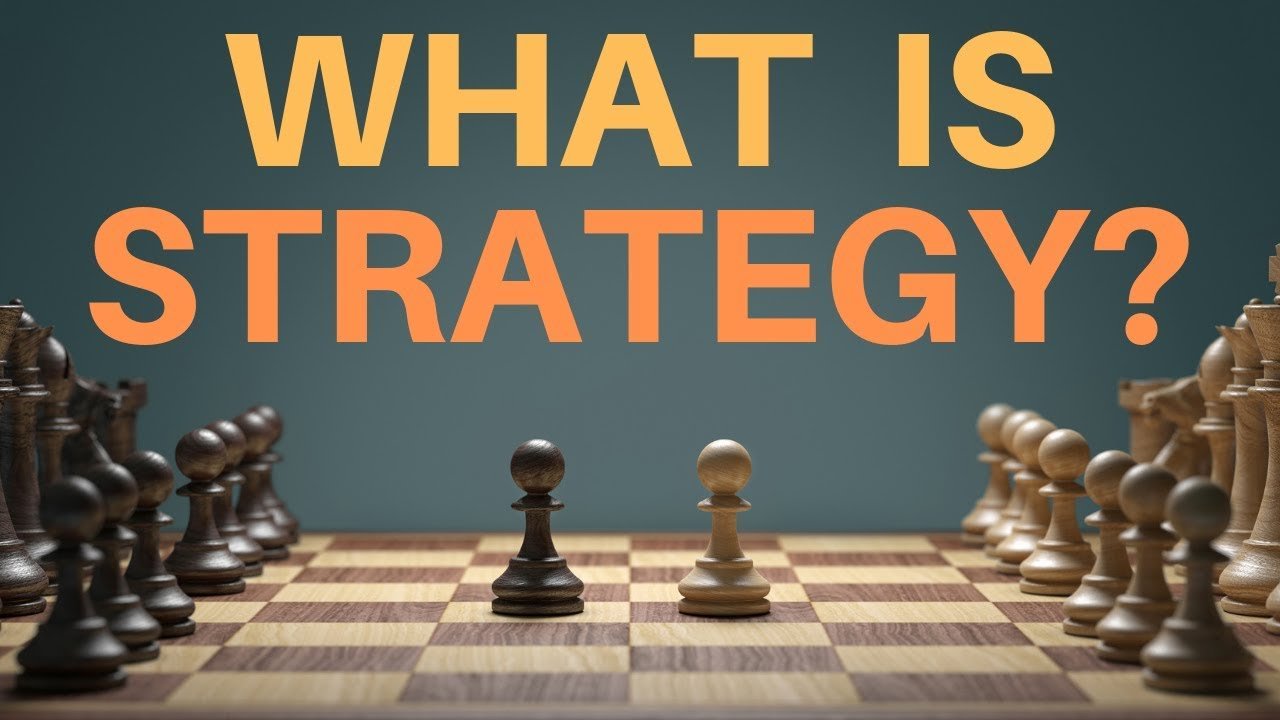What Strategy really is OPI
Strategy, Tactics, and Missions.
OPIs: One-Point Insights [OPI] are the quickest way to learn and understand one key management topic at a time. A brief and simple analysis of Strategy, Tactics, and Missions that explains what it is, and how critical it is that we understand it to guide our company to success whether a startup or a multibillion-dollar business.
There are many explanations about what strategy is; what we all know for certain is that it is critical that we understand the strategy to guide our company to success whether a startup or a multibillion-dollar business.
However, strategy is frequently misunderstood and generally, the company pays the price leading to lackluster profits and growth or to complete failure.
So, what is strategy in simple terms?
Strategy is the “what”; Tactics are the “how”; and Missions “execute” the Tactics.
Strategy defines “what” you will do to move away from competition and into a space with little or no competition and its added benefits.
Tactics define the “how” you are going to implement your strategy, by deception or force.
Missions are deliberate actions that execute your tactics.
A Plan to take something from someone who does not want to give it to you by deception or force
IHere is a simple but very clear case study¹ that showcases how strategy leads to tactics, and how tactics lead to actions:
Casio wanted to introduce their Card Size Mini Calculator into the established USA calculator market.
LC-78 Casio Mini Card
However, the market for personal calculators was dominated by a well-known Made in the USA brand.
So, which was the best approach for Casio to enter the USA market?
Casio devised its Strategy, Tactics, and Missions: these are the steps they followed.
1 ⌐ They had an individual whom they trusted to find out one thing about the US manufacturer; their total capacity to produce specifically the personal calculator.
2 ⌐ Once they knew this, they sent a purchasing team to open an office near the manufacturing plant.
3 ⌐ The purchasing team requested a meeting with the manufacturer; they wanted to purchase the USA-made calculators and send them to Japan because they had previously carried out a market test and the demand for the calculators was a complete success, they sold immediately.
3 ⌐ The US manufacturer was delighted to export their calculators because they had unused capacity when compared to their current annual national demand.
4 ⌐ The Casio purchasing team placed an order for a quantity below the manufacturer’s unused capacity. The Casio team shipped the calculators immediately to Japan.
5 ⌐ A very short time later, the Casio team placed a second order which was slightly lower than the manufacturer’s unused capacity, and immediately shipped it to Japan.
6 ⌐ The US manufacturer was pleased that they were now using their full capacity.
7 ⌐ Again, a very short time later, the Casio team placed a third order, this time for a quantity significantly greater than the US manufacturer’s unused capacity; they were hesitant to fill the full order because this would reduce their supply to the local market. Of course, they did not disclose this to the Casio team.
8 ⌐ The Casio team offered them a premium price if they filled their orders completely because the US calculators were selling incredibly well in Japan, and they would place a much larger fourth and fifth order. The US manufacturer agreed to fill the orders. They were going to make a huge profit.
9 ⌐ Casio's third, fourth, and fifth orders accounted for the manufacturer’s total capacity for several months.
10 ⌐ After shipping the fifth order to Japan, the purchasing team suddenly canceled the sixth order and did not place additional orders, saying they had saturated the Japanese market.
11 ⌐ The USA manufacturer understood and planned to start production for the local market. The sales department began calling their customers and to their surprise, no one placed any orders. They began to inquire.
12 ⌐ Their normal distribution channels were empty; they could not find any of their calculators. So why were they not getting any orders? The distribution channels were full of…Card Size Mini Calculators from Japan.
Here is what happened:
Casio’s Strategy was to enter the USA without competing for the market; the way to do this was to remove the USA personal calculators from the market. This is the “WHAT” you are going to do.
“HOW” are you going to do this? Through Tactics:
⌐ Finding out the USA manufacturer’s capacity.
⌐ Opening an office in the USA.
⌐ Placing orders to gradually deplete their distribution channels.
⌐ Importing Casio’s first-in-the-world Card Size Mini Calculators to fill the depleted distribution channels effectively replacing the USA personal calculators without competing for the market.
⌐ Casio destroyed all the USA calculators they purchased.
Once the Strategy and Tactics were well-planned, Casio began to “EXECUTE” them through specific Missions.
ICasio took the market by deception and force without a fight.
I trust this simple case-study story clarifies what strategy really is; to take something from someone who does not want to give it to you by deception or force. This is essential for success in businesses within a capitalist environment.
Footnote ¹ I heard about this case study many years ago; I do not recall the source or if it is a true story or not. I give credit to the author.
Explore, learn, and understand how to avoid similar situations by reading more OPIs from Celeran Enterprise Genetics, Inc. Find them here: https://celeraneg.com
They are Free to read online or download as PDFs.


